Leafy Spurge - A Problem in Your Fields
by Kale Van Bruggen
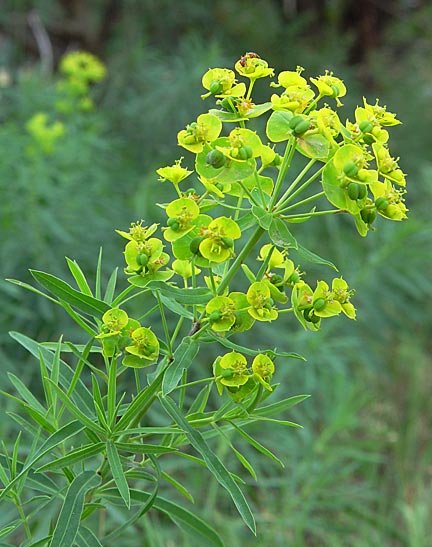 Leafy Spurge
Leafy Spurge
Basic Information
Scientific Name: Euphorbia esula
Family: Euphorbiaceae – Spurge family
This perennial dicot is considered a noxious weed in most states. The plant is native to Asia and Europe and is an introduced species into the United States.
The plant stands 2 1/2 - 3 feet tall and can be identified by a milky white sap and yellow flower parts in sets of threes. Leafy spurge thrives best in dry conditions
The plant was first reported in the United States in 1827 in the state of Massachusetts. The first reporting in North Dakota was in 1907, only eighty years after the plant first reached this country.
Leafy spurge has become a dominant problem in pasture and rangeland habitats.
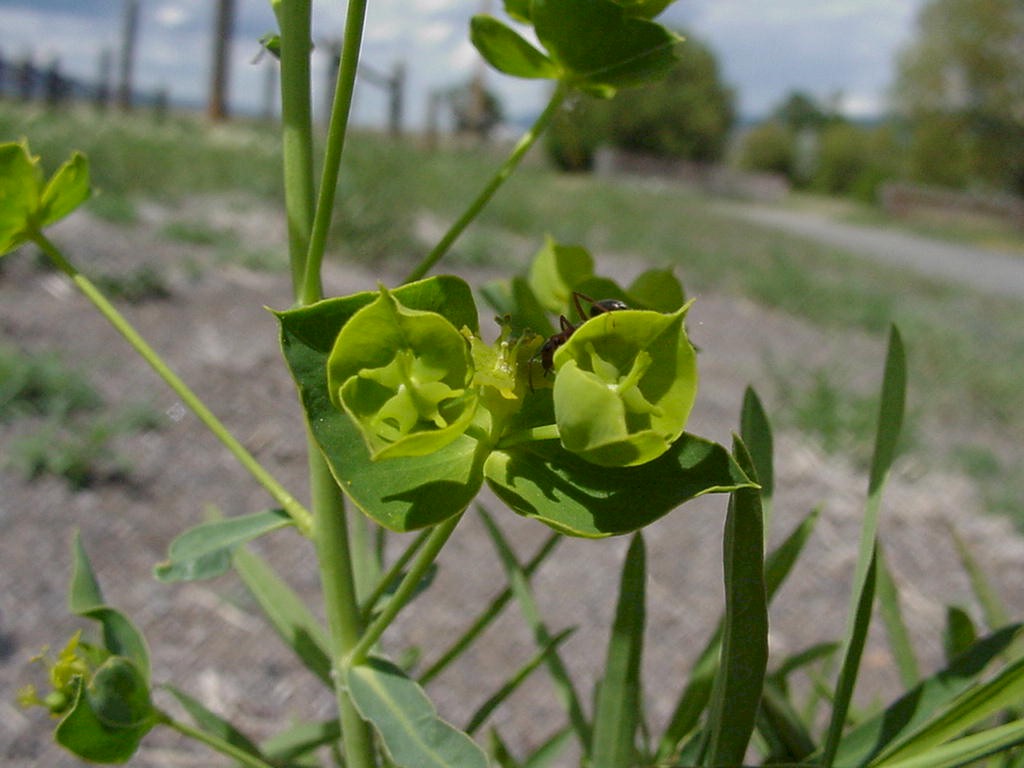 Leaves
Leaves
The leaves of the leafy spurge are small, oval shaped leaves. They have a slightly wavy margin. The leaves are also frosted, which means that they are partly dead. When damaged, the leaf produces a milky, white latex.
Flowers
The flowers of leafy spurge are very small. They first appear in greenish-yellow structures and are enclosed by yellow bracts. These yellow bracts will open in late May or early June, however, the actual flower will not develop until mid-June.
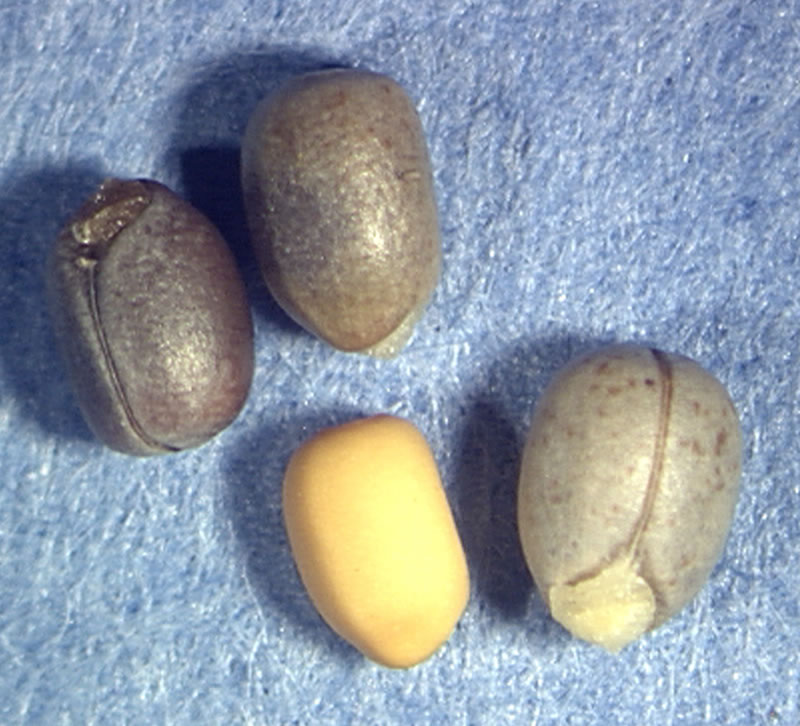 Fruits and Seeds
Fruits and Seeds
Seeds are oblong shaped and can vary in color from a gray to a purple. The seeds are found in clusters of three. After the reproduction of a seed ends, the seed capsules become dry and shatter, scattering the seeds in a healthy distance from the parent plant.
Reproduction
Leafy spurge seed have high germination rates and can spread as far as 15 feet when seed capsules explode. Seeds in the soil can remain alive for over seven years, which means that leafy spurge will easily come back in areas that it was once destroyed. Another way leafy spurge reproduces is by a horizontal root system that can spread several feet per year. The root will spring up new buds creating more plants around or near the parent plant. The root system can also reach more than 15 feet into the ground, making it difficult to kill.
Ecological Threat
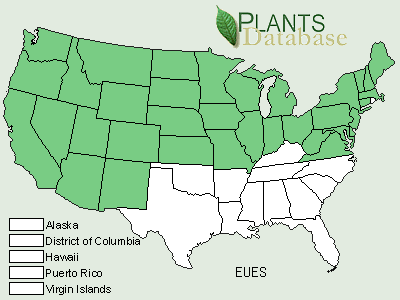 Distribution
Distribution
Leafy spurge is located all around the United States except in the south-eastern states. Leafy spurge is a very serious problem in the upper midwest including state such as North Dakota, South Dakota, Montana, and Wyoming.
Presence of leafy spurge can choke out other plants around it by shading other plants trying to grow and taking up their available water supply. Plant toxins released into the soil can also prevent other plants from growing near it. Once leafy spurge has appeared in an area, it will spread very quickly if not properly controlled.
When consumed by livestock, the toxins in leafy spurge affect the digestive tract and cause scours and weakness. When large amounts are ingested, it can even cause death. Cattle will usually refuse to eat leafy spurge naturally, but have been known to ingest it when presented in the dry form with hay.
The Northern Plains Agricultural Research Labratory reported that a study done by North Dakota State University estimated that direct annual financial impact in Montana, North Dakota, South Dakota, and Wyoming to be 40.2 million dollars.
Controlling Leafy Spurge
Natural
Oberea erythrocephala: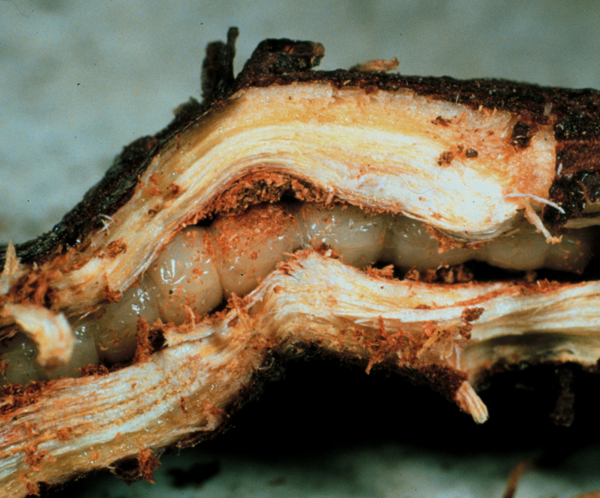
Very small, slender beetles that bore into the root of leafy spurge. Adult beetles are active in the early to midsummer season and feast on Leafy spurge leaves and flowers. After mating, the female beetle will lay a single egg in a leafy spurge stem. Females may lay up to 40 eggs per season. The larvae will then hatch and burrow down the stem to the root, into the root crown region where it will do most of its feeding.
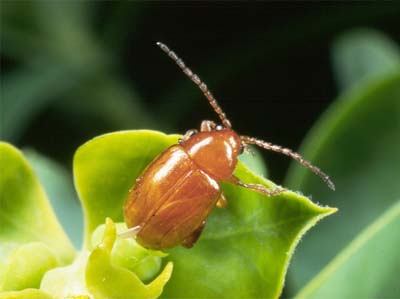 Aphthona spp.
Aphthona spp.
The Aphthona species of beetle is similar to that of the Oberea erythrocephala. There are four species of this root mining beetle being used in the United States. They are about the size of a flax seed and vary by color and shape between species.
Spurgia esulae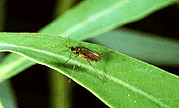
Spurgia esulae is a shoot tip gall midge that comes in early July. Their small size and short life span make them difficult to find. New larvae move into bud tips and begin feeding. The leafy spurge plant produces a gall as a result of the insect feeding. The gall does not kill the plant, but high densities of galls can prevent the plant from producing new flowers and therefore reproducing.
Chemical
Herbicides must be applied in June when the flowers and seeds of the leafy spurge plant are developing. If June application is missed, a midSeptember application will also affect the plants since this is the time nutrients are being moved down into the roots. Chemicals must be applied repeatedly for several years before Leafy spurge populations will decrease. This can be quite costly when compared to a single releasing of Leafy spurge beetles as a way to control plant populations.
Personal Dealings with Leafy Spurge
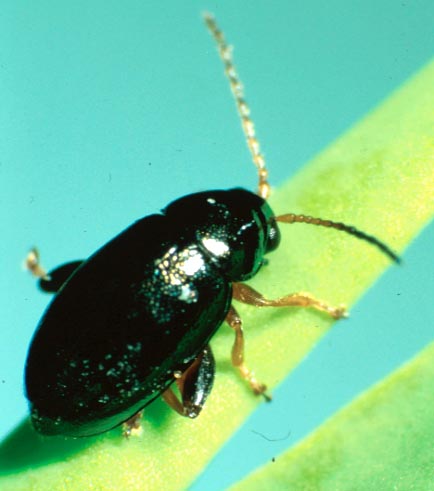 For several summers in high school, I was employed by the LaMoure County Weed board to harvest Leafy Spurge Beetles around the area of Dickey, North Dakota. Beetle adults, such as the one pictured to the left of the Aphthona species, were collected before the females laid eggs. Collection was done by walking through pastures and swinging nets over the tops of the Leafy Spurge plants, where the adults spend the daytime feeding. The most productive collecting conditions are on hot days with little to no wind, when the beetles are most active on the tops of plants.
For several summers in high school, I was employed by the LaMoure County Weed board to harvest Leafy Spurge Beetles around the area of Dickey, North Dakota. Beetle adults, such as the one pictured to the left of the Aphthona species, were collected before the females laid eggs. Collection was done by walking through pastures and swinging nets over the tops of the Leafy Spurge plants, where the adults spend the daytime feeding. The most productive collecting conditions are on hot days with little to no wind, when the beetles are most active on the tops of plants.
Once collected, the beetles would be stored in brown paper bags and kept in a refrigerator to reduce activity. Farmers of LaMoure County could then purchase the beetles to release in their fields, ditches, and pastures where Leafy spurge was a problem. I released these beetles in one of our fields several times one summer. They were very successful in completely killing off the leafy spurge population in our field.
Helpful Weblinks
http://www.nps.gov/plants/alien/fact/eues1.htm
http://www.nysaes.cornell.edu/ent/biocontrol/
http://www.team.ars.usda.gov/v2/leafyspurge.html
http://plants.usda.gov/java/profile?symbol=EUEShttp://plants.usda.gov/java/profile?symbol=EUES
Questions/Comments/Concerns?
EMAIL ME!